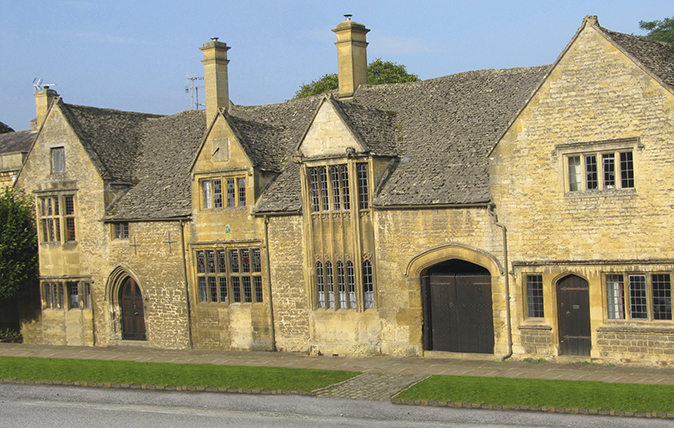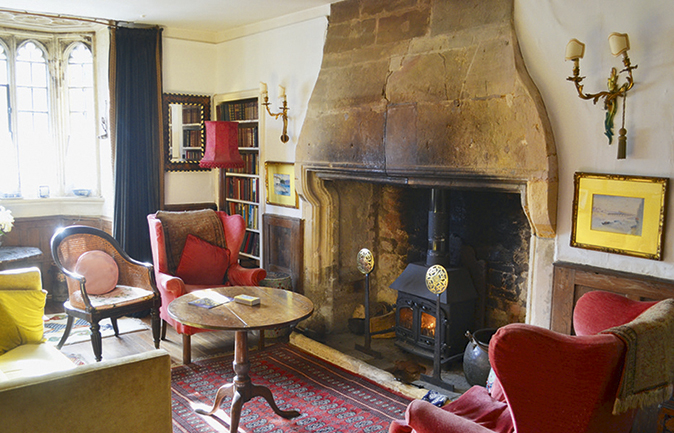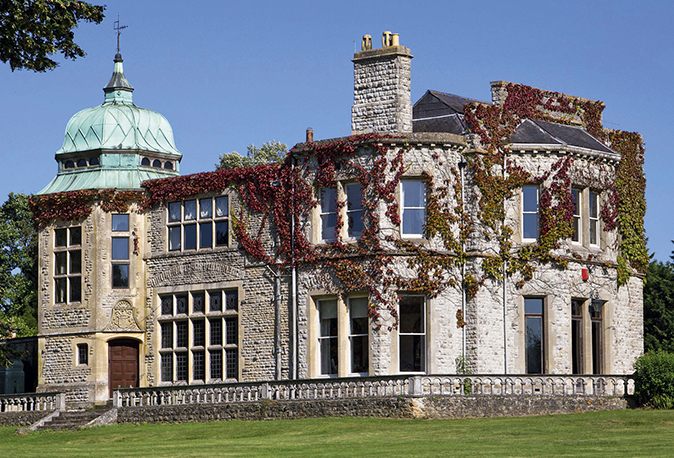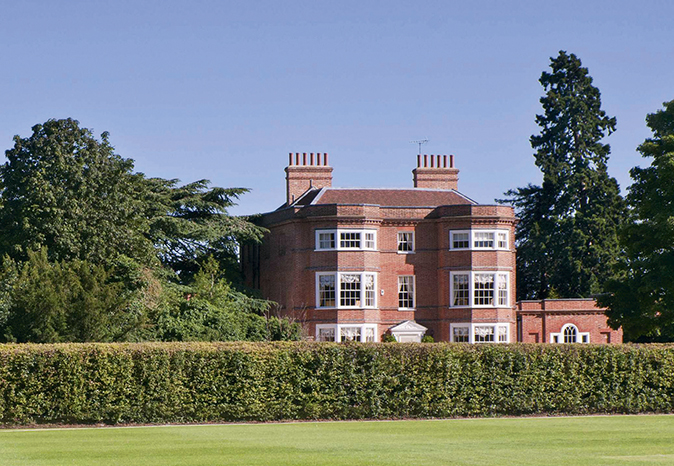Historic country houses for sale
Join the illustrious ranks of owners of these three houses with an intriguing past.


Described by the historian G. M. Trevelyan as ‘the most beautiful village street now left in the island’, Chipping Campden’s elegant curving High Street encapsulates, in honey-tinted Cotswold stone, many of the great classic styles of English architecture: houses and cottages from the Elizabethan, Jacobean, Georgian, Regency and Victorian periods.
This week, however, all of these are eclipsed by the Gloucestershire market town’s s oldest building, the imposing, Grade I-listed Grevel House (Fig 1), claimed to be ‘one of the finest unrestored houses of its age in England’, which has come to the market for the first time in 63 years, priced at £2.5 million through north Cotswold agent Mark Annett (01386 8‘41622).

With its distinctive arched doorway and exquisitely decorated windows surmounted by gargoyles Grevel House is the earliest of a row of fine, late-14th-century buildings that dominates the High Street at the heart of Chipping Campden. The house was built in about 1380 for William Grevel, one of the country’s most important wool merchants and a financier to Richard II, at a time when the town was enjoying unrivalled prosperity as the regional capital of England’s flourishing wool trade.
His house stands opposite the 14th-century Woolstaplers Hall, built by another rich merchant, Robert Calf: for centuries, it was a wool exchange in which merchants from London and the great cities of Europe came to buy Cotswold fleeces for shipment around the world.
Grevel left money in his will to complete the rebuilding of the 12th-century St James’ Church, one of the great Cotswold ‘wool churches’, where a brass describes its benefactor as ‘the flower of the wool merchants of England’. Following his death in 1401, the property passed to his son John and was eventually sold to one Lionel Cranfield, Earl of Middlesex.
Subsequent high-profile owners, whose crests adorn the splendid bay window in the dining room of Grevel House, included the Earls of Warwick and Gainsborough and members of the Greville, Elwes, Hicks, Ellenborough, Noel and Rhys families.
According to its English Heritage listing, this ‘complex and enigmatic building’ was altered a number of times, most notably in the 16th, 17th and 19th centuries, when it served as the Gainsborough estate office. The building’s glory days were long gone and the house had been split into two when the current owner, Dr Jennifer Olliff and her husband, the late Dr Donald Olliff, came to Chipping Campden to take over the doctor’s practice in the town.
Exquisite houses, the beauty of Nature, and how to get the most from your life, straight to your inbox.
Nine years later, in 1962, they acquired the extension known as ‘the cottage’ that adjoins Grevel House, where they planned to live and work when, by chance, the main section of the house also came up for sale. They bought it a year later and set about reinstating the cottage and the front section as one house. In 1969, they extended the property by acquiring the neighbouring farmyard and out- buildings from a local farmer.
Consequently, Grevel House now boasts gardens and grounds of just under two acres, something rarely found these days in a house in the centre of a north Cotswold village, Mr Annett points out.
As hard-working local doctors, the Olliffes became something of a Chipping Campden institution, before retiring in the 1990s. Dr Olliff continued to live there after her husband’s death, but, now aged 91, she has finally decided to sell this remarkable house, still miraculously untouched by time.
It offers accommodation spread over two floors, including two reception rooms, a library (the former medieval solar), five main bedrooms and three bathrooms. Additional living space is available in the former consulting rooms.
For Mr Annett, the sale of Grevel House, with its fine fireplaces, flagged floors, beams, panelling and ‘real old-world atmosphere of a bygone age’, represents a once-in-a-lifetime opportunity. Fortunately, he says, given the building’s Grade I listing, large-scale development of the barn and outbuildings seems unlikely. And as far as a successful restoration is concerned, ‘the trick will be to employ experienced conservation architects to handle the planning process and use good Cotswold craftsmen to implement an approved scheme—but, please, no solar panels’.

While the owners of Grevel House were establishing themselves in the Cotswolds in the early 1950s, Mrs Pain, the recently widowed owner of the vast, Victorian Bignell House (Fig 2) at Chesterton, near Bicester, Oxfordshire, had the original part of the house demolished, leaving only the nursery wing added by Charles Twysdon Hoare in 1892. That building forms the main part of the still impressive Bignell House, which, today, stands in 20 acres of former estate parkland.
Both the house and its lovely landscaped gardens have been lovingly maintained by its current owner, who bought it in 1979 and is now selling through Strutt & Parker (01865 366645) at a guide price of £2.75m. The imposing stone house offers 6,830sq ft of grand Victorian living space that includes seven reception rooms, five/six bedrooms, four bath/ shower rooms and a large kitchen/ breakfast room.
The original Bignell House took six years to construct and was completed in 1866 at a cost of £5,500. It was designed by the Oxford architect William Wilkinson, who also designed the city’s Randolph Hotel and St Edwards School. In 1911, Hoare’s daughter, Violet, married Admiral Ruck-Keene, but, in 1935, lost both father and husband when the two men died within a few months of each other.
This led to the sale of Bignell House, with its three tennis courts, cricket ground, 1,454 acres of land and four farms to Mrs Pain’s husband, Douglas, who died in 1951.

Strutt & Parker (020–7318 4613) are also handling the sale, at a guide price of £6m, of the grand, Grade II- listed, Georgian Chauntry House (Fig 3), which adjoins the church and overlooks the cricket ground in the picturesque Thames-side village of Bray, near Maidenhead, Berkshire.
The former 18th-century workhouse was massively altered in the 19th century, when it first became a private house. During the First World War, it was home to the Nicholson family, followed in the 1920s by Lady Benson, who left a troubled Ireland for the calmer atmosphere of Bray. In the 1950s, the house was converted into flats, before becoming the Chauntry House Hotel in the 1970s.
In 2004, the hotel was bought by its current owner and restored to its former use as a splendid family house, with an elegant reception hall, five reception rooms, a kitchen/breakfast room, a wine cellar and a spa as well as a detached studio annexe with a shower room, the whole set in just under an acre of immaculate landscaped gardens.

